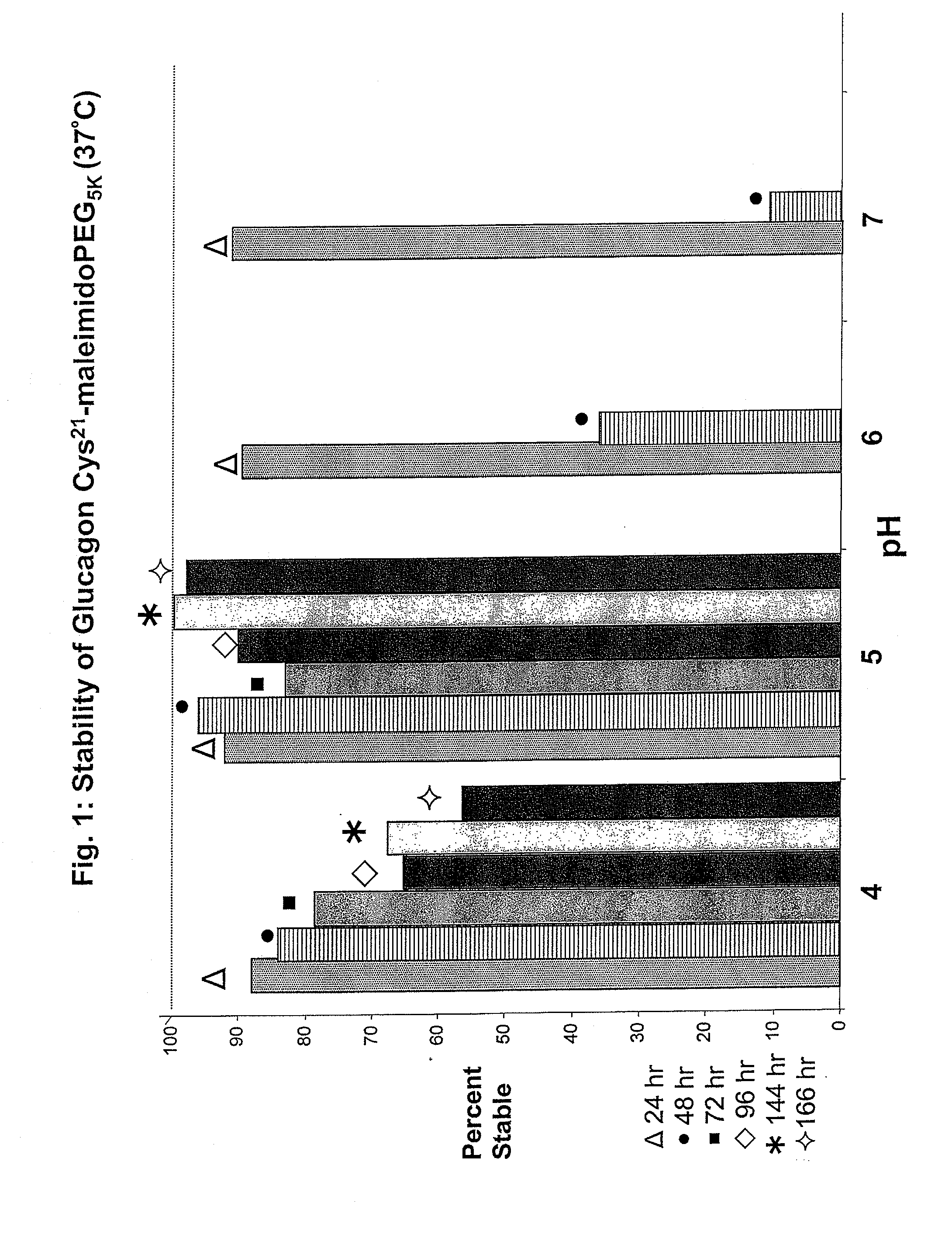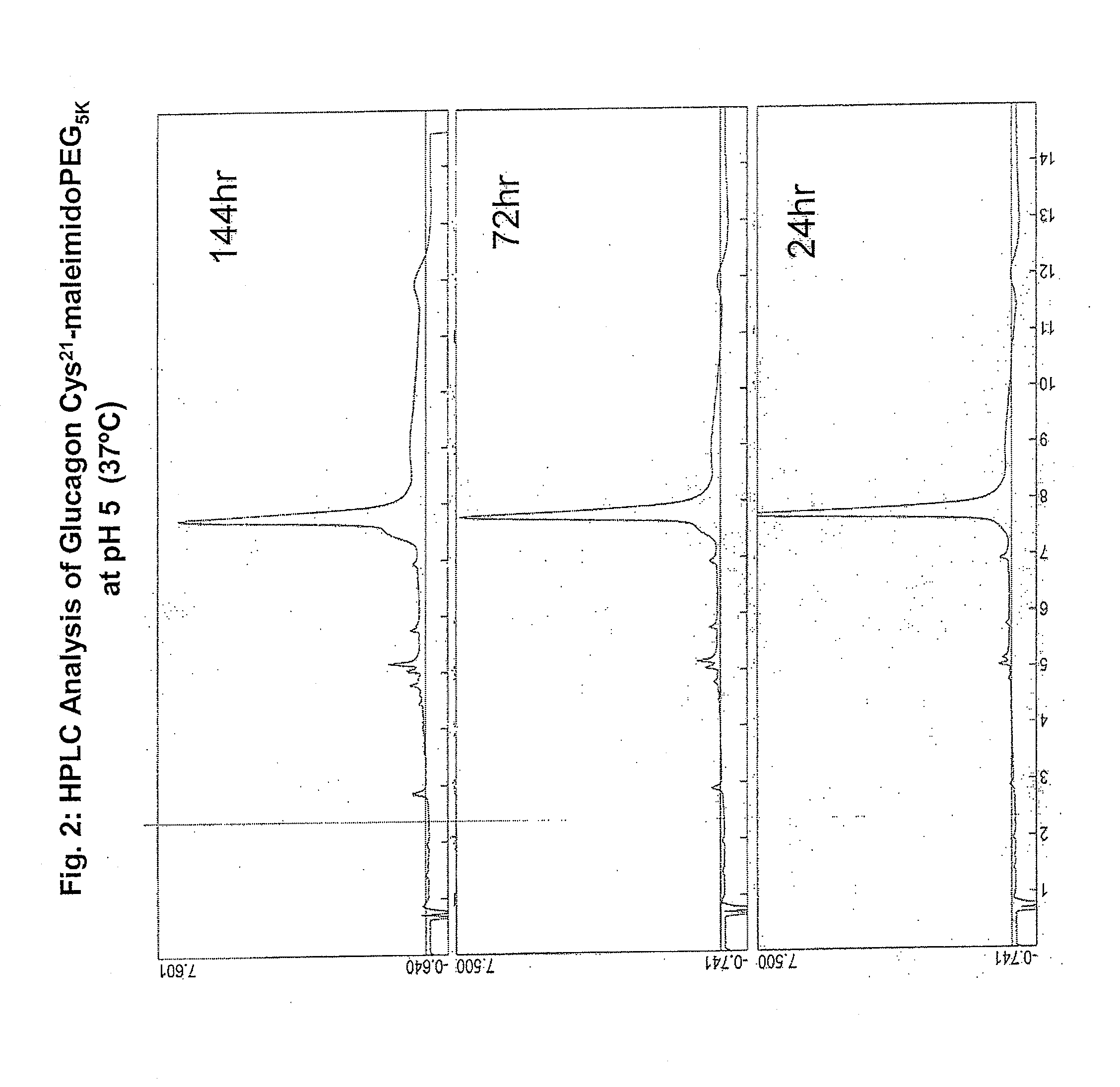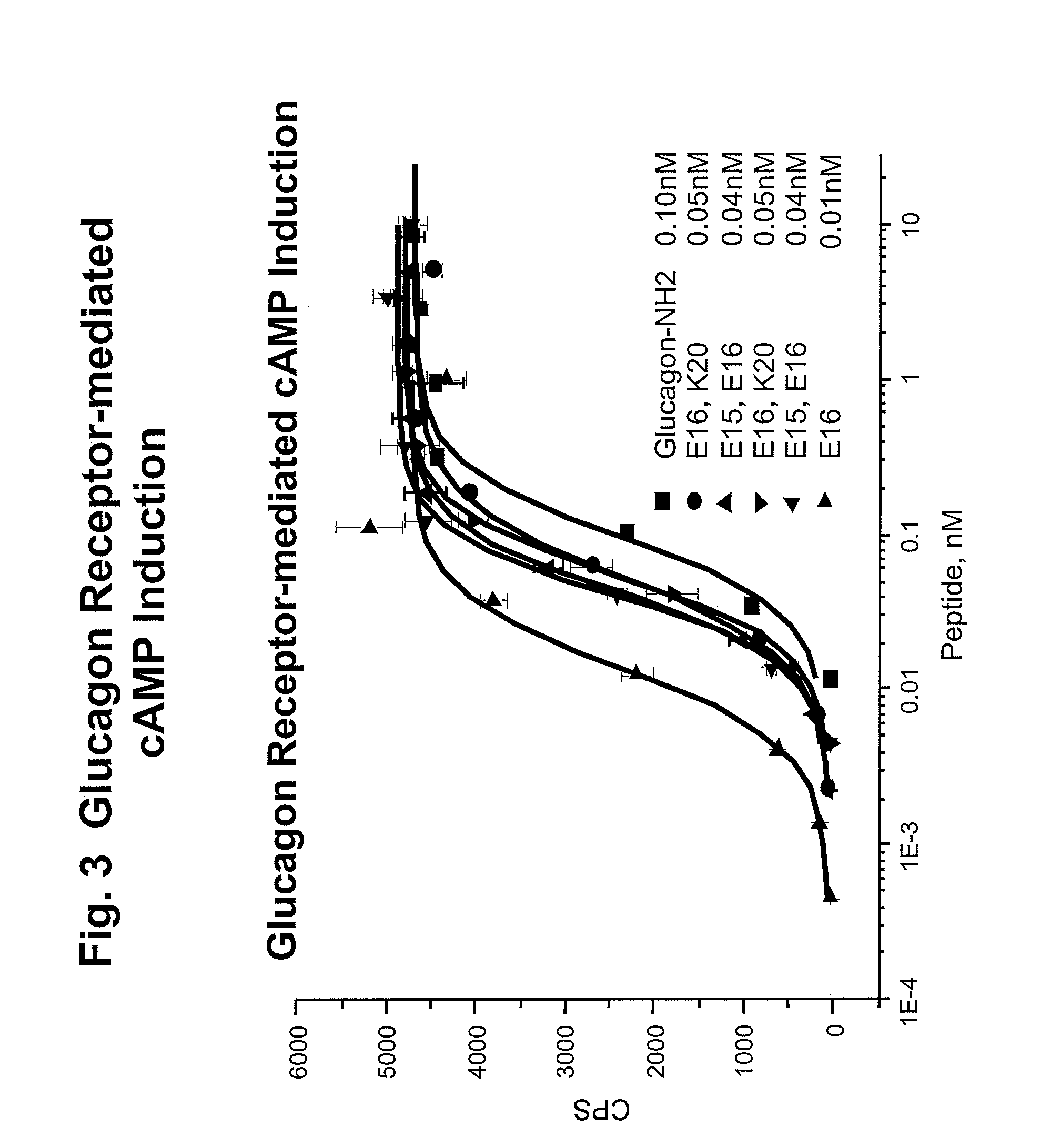Glucagon/glp-1 receptor co-agonists
a technology of glucagon and glp-1, which is applied in the direction of antibody medical ingredients, peptide/protein ingredients, and metabolic disorders, can solve the problems of excessive blood glucose levels, and achieve enhanced biophysical stability and/or aqueous solubility, high potency, and enhanced activity
- Summary
- Abstract
- Description
- Claims
- Application Information
AI Technical Summary
Benefits of technology
Problems solved by technology
Method used
Image
Examples
embodiments
[0083]The invention provides glucagon peptides with increased or decreased activity at the glucagon receptor, or GLP-1 receptor, or both. The invention also provides glucagon peptides with altered selectivity for the glucagon receptor versus the GLP-1 receptor.
[0084]Increased activity at the glucagon receptor is provided by an amino acid modification at position 16 of native glucagon (SEQ ID NO: 1) as described herein.
[0085]Reduced activity at the glucagon receptor is provided, e.g., by an amino acid modification at position 3 as described herein.
[0086]Increased activity at the GLP-1 receptor is provided by replacing the carboxylic acid of the C-terminal amino acid with a charge-neutral group, such as an amide or ester.
[0087]Increased activity at the GLP-1 receptor is provided by modifications that permit formation of an intramolecular bridge between the side chains of two amino acids that are separated by three intervening amino acids, for example, positions 12 and 16, or 16 and 20...
example 1
Synthesis of Glucagon Cys17(1-29) and Similar MonoCys Analogs
[0161]0.2 mmole Boc Thr(OBzl) Pam resin (SynChem Inc) in a 60 ml reaction vessel and the following sequence was entered and run on a modified Applied Biosystems 430A Peptide Synthesizer using FastBoc HBTU-activated single couplings.
HSQGTFTSDYSKYLDSCRAQDFVQWLMNT(SEQ ID NO: 35)
The following side chain protecting groups were used: Arg(Tos), Asp(OcHex), Asn(Xan), Cys(pMeBzl), Glu(OcHex), His(Boc), Lys(2Cl-Z), Ser(Bzl), Thr(Bzl), Trp(CHO), and Tyr(Br-Z). The completed peptidyl resin was treated with 20% piperidine / dimethylformamide to remove the Trp formyl protection then transferred to an HF reaction vessel and dried in vacuo. 1.0 ml p-cresol and 0.5 ml dimethyl sulfide were added along with a magnetic stir bar. The vessel was attached to the HF apparatus (Pennisula Labs), cooled in a dry ice / methanol bath, evacuated, and aprox. 10 ml liquid hydrogen fluoride was condensed in. The reaction was stirred in an ice bath for 1 hr t...
example 2
Synthesis of Glucagon-Cex and Other C-Terminal Extended Analogs
[0163]285 mg (0.2 mmole) methoxybenzhydrylamine resin (Midwest Biotech) was placed in a 60 ml reaction vessel and the following sequence was entered and run on a modified Applied Biosystems 430 A peptide synthesizer using FastBoc HBTU-activated single couplings.
(SEQ ID NO: 36)HSQGTFTSDYSKYLDSRRAQDFVQWLMNTGPSSGAPPPS
The following side chain protecting groups were used: Arg(Tos), Asp(OcHex), Asn(Xan), Cys(pMeBzl), Glu(OcHex), His(Boc), Lys(2Cl-Z), Ser(Bzl), Thr(Bzl), Trp(CHO), and Tyr(Br-Z). The completed peptidyl resin was treated with 20% piperidine / dimethylformamide to remove the Trp formyl protection then transferred to HF reaction vessel and dried in vacuo. 1.0 ml p-cresol and 0.5 ml dimethyl sulfide were added along with a magnetic stir bar. The vessel was attached to the HF apparatus (Pennisula Labs), cooled in a dry ice / methanol bath, evacuated, and aprox. 10 ml liquid hydrogen fluoride was condensed in. The reactio...
PUM
| Property | Measurement | Unit |
|---|---|---|
| Weight | aaaaa | aaaaa |
| Solubility (mass) | aaaaa | aaaaa |
| Ratio | aaaaa | aaaaa |
Abstract
Description
Claims
Application Information
 Login to View More
Login to View More - R&D
- Intellectual Property
- Life Sciences
- Materials
- Tech Scout
- Unparalleled Data Quality
- Higher Quality Content
- 60% Fewer Hallucinations
Browse by: Latest US Patents, China's latest patents, Technical Efficacy Thesaurus, Application Domain, Technology Topic, Popular Technical Reports.
© 2025 PatSnap. All rights reserved.Legal|Privacy policy|Modern Slavery Act Transparency Statement|Sitemap|About US| Contact US: help@patsnap.com



